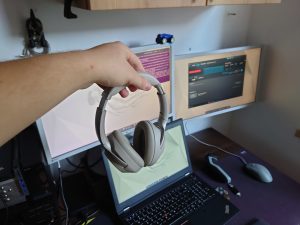OpenAI finally released the announcement of their AI video Generator Tool called Sora. It’s one such innovation that has captured the attention of both experts and AI enthusiasts alike is OpenAI’s Sora AI Video Generator.
In this article, I aim to dive deep into the workings of Sora, providing a thorough analysis of its capabilities, limitations, and potential implications.
What is Sora AI Video Generator?
Sora is a Text-to-video generative model or you can say AI video generator developed by OpenAI. You can easily generate a video that matches the description of your prompt.
Here is an example taken from the OpenAI Sora website:
Prompt: Extreme close up of a 24 year old woman’s eye blinking, standing in Marrakech during magic hour, cinematic film shot in 70mm, depth of field, vivid colors, cinematic
Sora represents a significant milestone in the development of AI-powered video generation technology. By analyzing vast amounts of visual data, Sora can generate videos that mimic real-world scenarios with remarkable fidelity.
Sora: What It Means and What Comes Next
The technical report for Sora has recently been released on the official OpenAI website, accompanied by a series of realistic demo videos that showcase its capabilities.
Sora has demonstrated the most realistic videos generated by any AI generative model in history.
However, it’s essential to approach these demos with a critical eye, recognizing that Sora, like any AI model, has its limitations.
How Long Can Sora Videos Be?
Sora videos can be as long as 60 seconds. So, if you’re using Sora to make a video, you can make it up to one minute in length. That’s enough time to share your message, story, or idea in a short and engaging video format.
How to Access Sora AI?
Currently, Sora is only accessible to a select group of researchers known as the “red team.” These experts are tasked with testing the model for any potential issues or risks. They generate content to identify problems so that OpenAI can fix them before making Sora available to the public.

OpenAI has not announced a specific release date for Sora to the general public yet. However, it’s anticipated to happen sometime in 2024.
What Are the Alternatives to Sora?
If you’re looking for alternatives to OpenAI Sora, one notable option is Runway Gen-2. Similar to Sora, Runway Gen-2 is also a text-to-video generative AI. It’s currently accessible via web and mobile platforms, offering another avenue for creating videos from text input.
Analyzing Sora’s Strengths
- Scene Generation: Sora can create realistic scenes ranging from everyday settings to fantastical landscapes.
- Object Animation: Sora can animate objects within a scene, bringing them to life with fluid movement and realistic physics.
- Text-to-Video Conversion: Sora can generate videos based on textual descriptions, turning written content into dynamic visual presentations.
- Style Transfer: Sora can apply different visual styles to videos, allowing users to customize the look and feel of their content.
Sora’s Limitations
1. Limited Understanding of Context:
Sora may struggle to understand the context of a scene or the relationships between objects, leading to inconsistencies or inaccuracies in its output.
2. Ethical Considerations:
The use of AI-generated content raises ethical questions regarding ownership, authenticity, and potential misuse. It’s essential to consider these factors when using Sora or similar technologies.
Sora’s Video Generation Working Process
To understand how Sora operates, it’s important to dive into the mechanics of its video generation process. Sora uses a combination of vision transformers and adaptive aspect ratios to analyze input data and generate corresponding video frames.
By extrapolating patterns from training data, Sora can infer missing information and create coherent video sequences. This process is iterative, with Sora continuously refining its output based on feedback from previous iterations.
Practical Applications Across Industries
Content Creation: Sora can smoothen the video creation process for content creators, allowing them to generate high-quality videos quickly and efficiently.
Marketing and Advertising: Sora can be used to create engaging and personalized advertisements customized to specific audiences, enhancing marketing efforts for businesses and brands.
Education and Training: Sora can help educators and trainers visualize complex concepts and processes, making learning more interactive and accessible.
Entertainment and Media: Sora can generate custom video content for entertainment purposes, such as animated shorts, virtual tours, and interactive storytelling experiences.
Addressing Sora’s Concerns and Limitations
Sora is not without its limitations. As mentioned earlier, Sora’s understanding of the physical world is still rudimentary, leading to occasional inconsistencies in its output.
Additionally, there are ethical considerations surrounding the use of AI-generated content, particularly concerning issues of authenticity and intellectual property rights. It’s essential to address these concerns proactively to ensure that Sora is used responsibly and ethically.
OpenAI’s Sora Alternatives?
If you’re looking for alternatives to OpenAI Sora, one notable option is Pika Labs and Runway Gen-2. Similar to Sora, Runway Gen-2 is also a text-to-video generative AI. It’s currently accessible via web and mobile platforms, offering another avenue for creating videos from text input.
Sora Research Technique
Research techniques Sora employs a unique diffusion model methodology to create videos. This model initiates the video generation process by presenting a noisy image, which gradually evolves over multiple steps to produce the final video output.
The model’s versatility allows it to either generate complete videos instantly or extend existing ones, ensuring continuity even when objects temporarily disappear from view.
Using a transformer architecture similar to GPT models, Sora achieves exceptional scalability in its operations.
Videos and images are represented as collections of patches, akin to tokens in GPT models. This unified data representation enables training diffusion transformers on a diverse range of visual data, encompassing various durations, resolutions, and aspect ratios.
Drawing from previous research in DALL·E and GPT models, Sora incorporates the recaptioning technique from DALL·E 3. This involves generating detailed captions for visual training data, enhancing the model’s ability to faithfully execute text instructions in the generated videos.
Moreover, Sora exhibits the capability to animate still images accurately, bringing their contents to life with meticulous attention to detail. It can also extend existing videos or fill in missing frames seamlessly.
Conclusion:
In conclusion, OpenAI’s Sora AI Video Generator represents a significant advancement in AI technology, with the potential to reshape the way we create and consume visual content. While Sora’s capabilities are impressive, it’s essential to approach its development with caution and skepticism, acknowledging both its strengths and limitations.




